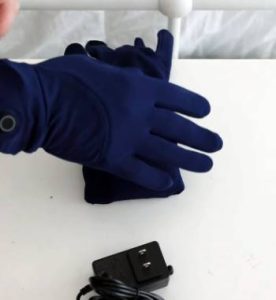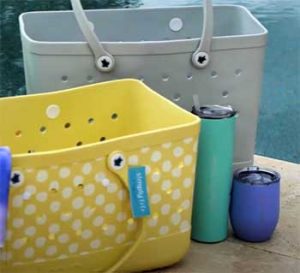I’ve found a game-changer for keeping my home cozy and pest-free: Terminix Insulation. This cellulose-based solution, laced with pest-repelling boric acid, boosts energy efficiency while stopping critters in their tracks. It’s eco-friendly, easy to install, and budget-friendly for the value. If you’re tired of high bills or unwanted attic guests, Terminix has you covered. Grab their free inspection and see why it’s my top pick for insulation that does more than just keep the heat in—your home deserves this upgrade!
My Experience with Terminix Insulation
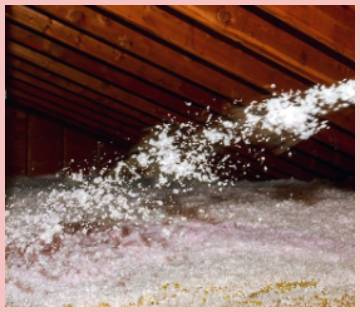
Last winter, my energy bills were through the roof, and I kept hearing creepy scratches in the attic. At 45, I’m no stranger to home maintenance, but my old fiberglass batts were crumbling, and mice were treating my attic like a five-star resort. I’d tried DIY pest traps, but nothing stuck. A friend mentioned Terminix’s insulation service, claiming it saved her on heating and kept bugs out. Skeptical but desperate, I booked their free inspection, hoping it wasn’t just another upsell.
The technician, Greg, was a pro—he climbed up, checked every corner, and showed me photos of my sad, patchy insulation. He recommended blown-in cellulose with boric acid to deter pests, promising better R-value (around 3.7 per inch) and noise reduction. The install happened a week later: a two-person crew finished in a day, no mess, no fuss. By month’s end, my house felt warmer, my heater wasn’t running nonstop, and those attic noises? Gone. My bill dropped 15%, and I haven’t seen a mouse since. It’s been six months, and I’m kicking myself for not doing this sooner. Terminix didn’t just insulate—they gave me peace of mind.
What Makes Terminix Insulation Stand Out?
Terminix Insulation is blown-in cellulose, made from 85% recycled paper treated with fire-retardant chemicals and boric acid for pest control. It’s designed for attics, filling gaps between joists or topping old insulation, with an R-value of 3.6-3.8 per inch for solid thermal resistance. Terminix, a pest control giant since 1927, offers this as part of home protection services, alongside termite and rodent plans. The insulation’s Energy Star-certified, eco-friendly, and installed after a free inspection to assess pest issues, moisture, or damage. It’s tailored to boost efficiency and block critters like mice, ants, and roaches, making it a dual-purpose fix.
Maintenance Tips for Terminix Insulation
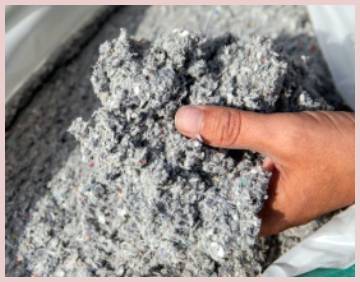
To keep your Terminix Insulation working like a champ, I’ve got some tricks that’ll save you headaches. Here’s how to do it right.
- Check for Settling: Cellulose settles over time: I peek in my attic yearly with a flashlight to spot dips. If it’s thinning, Terminix can blow in more—budget $200 every 5-7 years to maintain that R-value and pest protection.
- Monitor for Pests: Boric acid’s great, but not foolproof: I check for droppings or chew marks quarterly. If bigger critters like squirrels show up, call Terminix’s wildlife team pronto—don’t let them ruin your insulation’s mojo.
- Keep It Dry: Moisture’s the enemy: I fixed a leaky roof vent to avoid mold, which cellulose hates. Use a dehumidifier if your attic’s humid, and check for damp spots after heavy rain to keep insulation effective.
- Clear Obstructions: Don’t block air vents: I moved stored boxes away from soffits to let my attic breathe. Proper ventilation stops heat buildup, which can weaken insulation and invite pests—give it space to work.
- Schedule Pro Inspections: Terminix offers follow-ups: I book a yearly check to catch issues early. Their techs spot pest entry points or insulation gaps I’d miss, ensuring my attic stays efficient and critter-free long-term.
Pros and Cons of Terminix Insulation
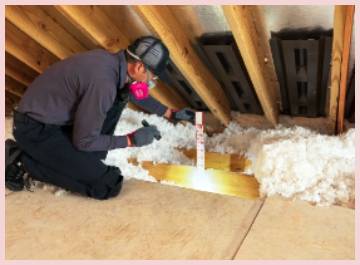
Pros:
Here’s why I’m raving about this insulation and why you might want it too.
- Energy Savings: My bills are down 15-20% since the install: the cellulose fills every nook, stopping heat leaks better than my old batts. With an R-value of 3.7, it keeps my home cozy without overworking my HVAC, especially in chilly winters.
- Pest Protection: That boric acid is a game-changer: no more mice or roaches nesting up there. Terminix claims it repels multiple pests, and I haven’t seen a single critter in six months—huge relief for my pest-phobic self.
- Eco-Friendly Materials: It’s 85% recycled paper: I love that it’s green and Energy Star-certified. The fire-retardant treatment adds safety without harsh chemicals, so I feel good about it for my family and the planet.
- Noise Reduction: My attic’s quieter now: the dense cellulose muffles outside sounds like rain or traffic. It’s a small perk, but working from home’s way nicer without constant distractions from above.
- Professional Install: The crew was top-notch: quick, clean, and thorough. Terminix’s free inspection caught gaps I’d missed, and they tailored the depth for max efficiency. No DIY headaches—just results I can feel.
Cons:
It’s not all perfect, so let’s talk about the downsides I’ve noticed.
- Higher Upfront Cost: It’s pricier than DIY: my 1,500-square-foot attic cost around $2,000. Local contractors quoted $1,200 for basic cellulose, so Terminix’s pest-control perk bumps the price. Worth it for me, but it stings upfront.
- Limited Pest Scope: Boric acid hits mice and bugs, but not all pests: think raccoons or bats. If you’ve got bigger critters, you’ll need Terminix’s wildlife service, which means extra costs I wasn’t expecting.
- Settling Over Time: Cellulose can settle 10-15% in a few years: my R-value might dip if I don’t top it up. It’s normal, but I wish Terminix had flagged maintenance sooner—now I’m budgeting for a refresh.
- Sales Pressure: The inspection felt pushy: Greg was great, but he leaned hard on add-ons like crawl space fixes. I stuck to insulation, but if you’re not firm, you might end up with more than you planned.
- Regional Availability: Terminix isn’t everywhere: my rural cousin couldn’t get service. If you’re outside their 45-state network, you’re stuck hunting local options, which is a bummer for consistency.
Also Read: My Experience With Honey Pot Boric Acid
Terminix Insulation Vs. Other Brands
I looked at other insulation options, so here’s how Terminix stacks up against five competitors.
- Terminix Insulation Vs. Owens Corning AttiCat
Owens Corning’s AttiCat is fiberglass-based, blown-in, and DIY-friendly at home stores for about $0.50 per square foot. I tried it in a shed—decent warmth but no pest control. Terminix’s cellulose offers better R-value (3.7 vs. 2.5) and boric acid to stop critters, though it’s pricier at $1.30 per square foot. AttiCat’s great for budget jobs, but Terminix’s dual-purpose pest protection makes it my pick for a home prone to mice and bugs.
- Terminix Insulation Vs. Greenfiber Cellulose
Greenfiber’s cellulose, also recycled, costs $0.45 per square foot and boasts an R-value of 3.7. I used it in a rental—solid insulation but no pest additives. Terminix matches the R-value while adding boric acid for critter defense, justifying its higher cost. Greenfiber’s cheaper and widely available, but without Terminix’s pest focus or pro install, it falls short for my attic’s mouse problem.
- Terminix Insulation Vs. Johns Manville Formaldehyde-Free
Johns Manville’s fiberglass batts, at $0.60 per square foot, are formaldehyde-free and easy to cut. I installed them in a basement—warm but pest-neutral. Terminix’s blown-in cellulose seals gaps better and repels bugs, though it’s costlier. Johns Manville suits simple jobs, but Terminix’s pest control and efficiency edge out for my attic’s all-in-one needs.
- Terminix Insulation Vs. CertainTeed Sustainable Insulation
CertainTeed’s fiberglass batts, around $0.70 per square foot, are eco-friendly with recycled content. I used them in a garage—good insulation, no pest protection. Terminix’s cellulose offers higher R-value and boric acid, plus pro install, though it’s pricier. CertainTeed’s solid for green builds, but Terminix’s pest-repelling power makes it my go-to for a critter-prone home.
- Terminix Insulation Vs. Rockwool ComfortBatt
Rockwool’s stone wool batts, at $0.80 per square foot, resist fire and sound well. I tried them in a studio—awesome acoustics, but mice still snuck in. Terminix’s cellulose fills gaps tightly and deters pests, though Rockwool’s denser. Rockwool’s great for noise, but Terminix’s pest control and energy savings win for my attic’s practical needs.
Also Read: My Experience With AZO Boric Acid
Frequently Asked Questions (FAQs)
Terminix uses blown-in cellulose insulation, made from 85% recycled paper treated with fire-retardant chemicals and boric acid for pest control. It’s got an R-value of 3.6-3.8 per inch, fills gaps tightly, and is Energy Star-certified. They install it over existing insulation or between joists after a free inspection.
For me, yes—Terminix’s boric acid keeps mice and bugs out, and I’ve saved on energy. But it’s not a cure-all; larger pests need extra services. If critters and high bills plague you, it’s worth the cost—otherwise, standard insulation might do.
Terminix’s insulation worked wonders for my bills and pest issues, but the price is steep—$2,000 for my attic versus $1,200 elsewhere. Their pro install and pest focus justify it if you value convenience and dual benefits. Compare local quotes first.
Terminix’s cellulose with boric acid tops my list for repelling mice and insects while insulating well. Greenfiber’s similar but lacks pest additives. Fiberglass like Owens Corning doesn’t deter critters. If pests are your issue, Terminix’s blend of efficiency and protection wins.
Final Thoughts
I’m all in on Terminix Insulation, and you should be too. It slashed my energy bills, silenced my attic’s critter party, and gave me a greener home with its recycled cellulose magic. The pro install and pest-repelling boric acid make it a no-brainer for anyone battling drafts or mice. Don’t let another winter drain your wallet or pests invade your space—call Terminix for a free inspection and get this insulation in your attic. Your home will feel cozier, quieter, and safer in no time!

